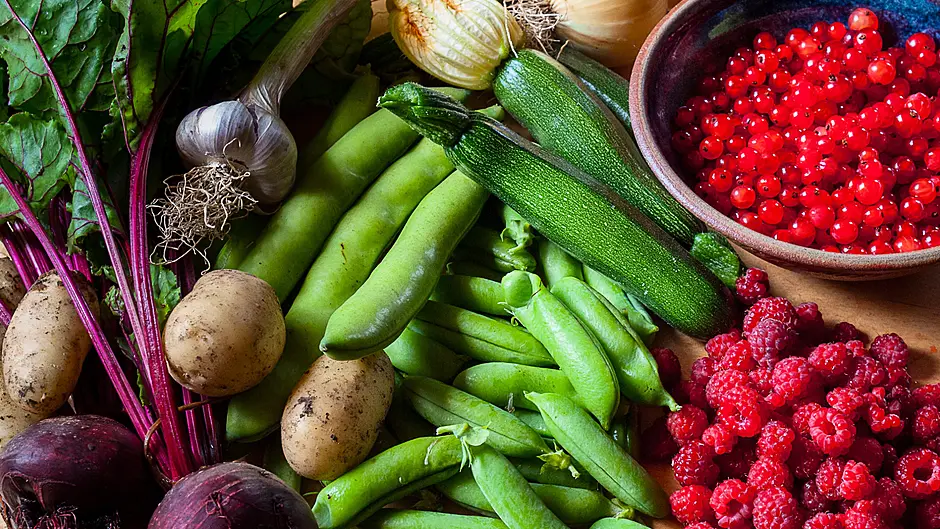IT’S been an odd summer with low temperatures and no real sign of a long settled stretch of heat. There has been rain, of course, so at least watering is kept to a minimum, but also plenty of the mould and mildew problems that mild damp weather can bring. If there are more problems in your garden than usual, don’t blame yourself.
Challenging weather makes growing more difficult and even the most vigilant gardener will have some plant casualties.
A few problems to look out for
Blight has already arrived on my second early potatoes – I remove the tops and dig the crop as soon as leaves show any sign and the potatoes are usually fine. Plants have made a good crop at this stage so there’s no problem in lifting and using them.
White rot affects onion and garlic plants – if the tops yellow and flop, then lift a plant and check for white fluffy mould around the roots. Lift the lot if you find this disease and keep any unaffected plants for storing.
Powdery mildew starts out as spots of white on cucumber, courgette, and pumpkin leaves. If left to spread, leaves can soon be covered with a white powder. Keep soil watered around plants and remove any severely affected leaves. Spray mildly affected plants with a one-part milk to nine-parts water solution.
Keep harvesting
There should be plenty of fruits and vegetables to pick at this stage. Keep harvesting and enjoy the wonderful mix of treats to eat. Look for recipes that use up any surplus and remember that the freezer is a wonderful way to store berries until you are ready to use them in jams, sauces etc.
Beetroot and carrots can be enjoyed while small and full of flavour. Size is less important than the fresh delicious taste. There will be plenty more crops to harvest over the next few months so eat, store and share the glut while things are at their tasty best.
Onions
Lift autumn planted onions, if you haven’t already, and keep an eye on the spring planted ones. You are aiming to lift the crop when bulbs have reached a good size and before any moulds or mildews strike. Choose a fine day if possible and spread plants out to dry in the sun. You may have to move the plants to a dry airy shed if the weather is wet.
 Lift red onions when bulbs are big enough.
Lift red onions when bulbs are big enough.
Red onions seem to grow more slowly than yellow onions, they also seem to be a bit less prone to disease. Leave them in the ground as long as possible and remember that small bulbs are always delicious in recipes.
Winter greens
The weather seems to suit brassica plants. Brussels sprouts, kale, broccoli and cabbages are all doing well. These plants don’t like dry ground or extreme heat, but at least at this stage they are big enough, and have a good enough root system, to be more tolerant if a heatwave arrives.
Keep the soil weed-free if possible and mulch with grass clippings to help retain moisture. Tall growing plants need a secure stake so they don’t get knocked over in a strong wind. Use two or more ties to hold the stem in place.
Watch out for caterpillars eating the leaves. These creatures hatch from eggs on the underside of leaves and they hide in folds at the heart of a plant. Turn leaves over and look closely. If you can squash eggs or small hatchlings, you won’t have to pick off as many large caterpillars over the coming weeks.
Sweet peas
These fragrant flowers are a favourite of mine. They look and smell gorgeous climbing over a garden frame or picked as a bunch for the house. It’s important to keep picking flowers if you want more to come. It’s also important to provide the correct supports for growing plants.
 Enjoy the glory of sweet peas.
Enjoy the glory of sweet peas.
Sweet peas produce small tendrils that will twine around small twigs or wires. The stems don’t twist around poles and nor are the tendrils big enough to hold growing stems securely around a bamboo cane. You need to provide small enough diameter structures for the tendrils to grip tight.
Push in some tall twiggy branches or tie strings or wire between larger supports – enough tendrils will find these to create a support for upward growth. If your sweet pea plants are unruly or blow down, you can always tie them back up with string to hold them in place.
Time to sow
Lettuce and salad leaves, spinach, parsley, spring cabbage, swiss chard, turnips, pak choi and Florence fennel. All of these do well in a greenhouse or polytunnel. Buy in plants if you want to get some autumn cauliflowers or calabrese into the ground.






